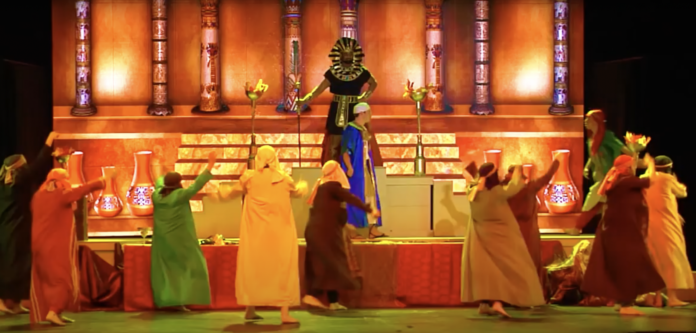Throughout the centuries, Jewish communities all over the world have put on plays associated with various Yomim Tovim. These performances were quite popular in the Portuguese-Jewish community in Amsterdam and among the Jews of Italy during the Renaissance. But the Purim play has always occupied a cherished place on the Jewish world stage.
The date of the earliest Purim play is shrouded in obscurity, although several dramatic productions are known to us from the 16th century. The first published script was written in Frankfurt in 1708 and was called The Achashveirosh Shpiel. However, because it contained some lines that the rabbanim disapproved of, they banned its performance and ordered that all copies of it be burned.
History has preserved a slightly later production entitled The Yosef Shpiel, or Mechiras Yosef, which was written by a Jew named Berman Malenburg in 1710. This Purim play was sanctioned by the rav of Frankfurt, and the cast was said to be composed of his yeshivah students. It ran alongside a second play entitled Dovid and Golyas, and both were performed throughout the entire month of Adar. They attracted huge crowds of both Jews and non-Jews, and there were two soldiers stationed at the entrance. In fact, the authorities eventually closed down the production out of concern for its popular appeal. Ironically, all copies of this play were also burned, not because they contained any objectionable content but because they were consumed in the great fire that tore through the Frankfurt ghetto in 1711; they were subsequently reprinted in 1713 due to their great popularity.
The Yosef Shpiel would go on to be reenacted in other cities, where the audience would be brought to tears by the rendering of Keil Malei Rachamim for Rochel Imeinu, and to celebration and laughter at the conclusion. The rav of Nikolsburg and Prague, Rav David Oppenheim, is said to have allowed open-air productions in which his own talmidim took part. The Yosef Shpiel would eventually be performed across the European continent, including Russia, Poland and Lithuania, but it was especially beloved in Galicia and Hungary, reaching its heyday in the early 20th century. Its popularity continued even after the Holocaust, where it was staged in the British detention camps in Cyprus as well as other DP camps.
With the reconstitution of Jewish life in Israel and America in the aftermath of World War II, this play saw a renewed resurgence. For many years, one could reliably expect to see an advertisement for The Yosef Shpiel in both the religious and secular newspapers. However, in the last several decades it has ceased to be performed.
To read more, subscribe to Ami





















